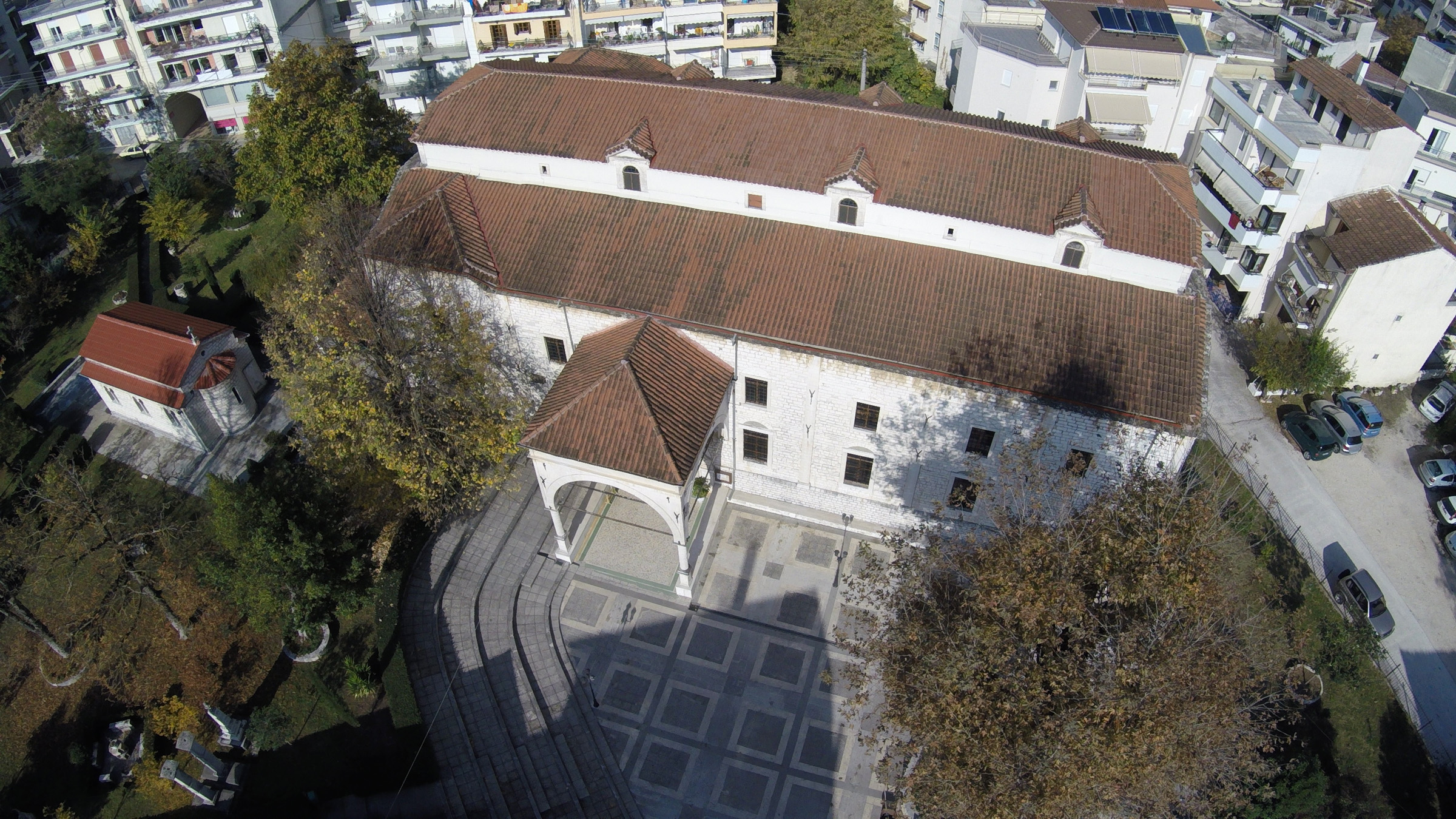The monastery is on the east side of the island just a short distance from the village. The historical information for the foundation of the monastery is drawn from the autobiography of Theophanis and Nektarios Apsaras brothers, who originated from a mainland noble family, whose members held important positions in the city of Ioannina since Byzantine era. According to Aravantinos the family of Apsaras settled in Ioannina from the area of the Red Lithares of Thesprotia around 1350. Nektarios and Theofanis, after a short stay in Dionysiou Monastery on Mount Athos, returned in 1505 in Ioannina to rebuild the Monastery of St John the Baptist. The strong opposition encountered by the political and ecclesiastical authorities of Ioannina, however, forced them to leave the island and seek refuge in Meteora, where they built the church of All Saints in Varlaam Monastery. There is no information on the history of the monastery of St. John after its establishment. But it is known that at the late 18th century it was associated with the guild of wine sellers, which contributed to the mural painting of the church in 1789, and to the repair of the frescoes after the disaster the monastery suffered by the sultan’s troops in 1821 -1822. To this work, carried out in two phases, in 1824 and 1891, contributed the guild of pension owners which was also connected to the monastery. Today just the catholicon and some cells have been preserved. The relics of the monastery include a portable icon depicting St John the Baptist as well as scenes from his life, a work painted by the Cretan painter Mark Bathas who lived and died in Venice.
Monastery of St John the Baptist
×Information
+Get directions
1. Click the «Get Directions» button below . Enter the home position in «A:» . The destination position «B:» is already completed.
2. Click on ‘GET DIRECTION’ button.
To change the transportation mode, click on the corresponding icon for transport by car, public transport, cycling, hiking, or plane.
+Evaluation
+Contact



















